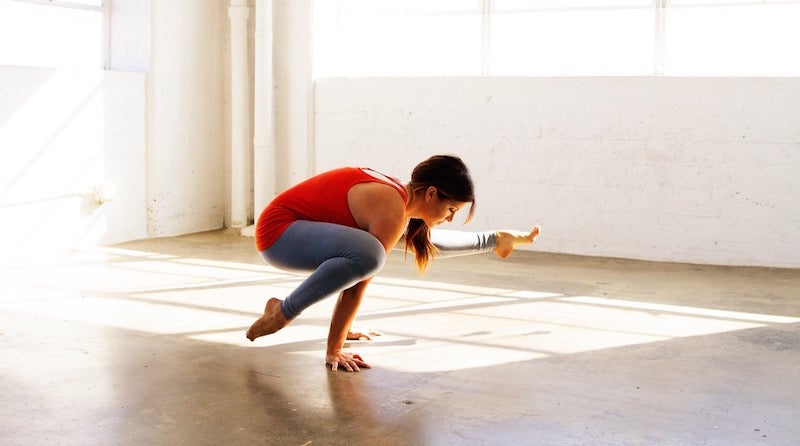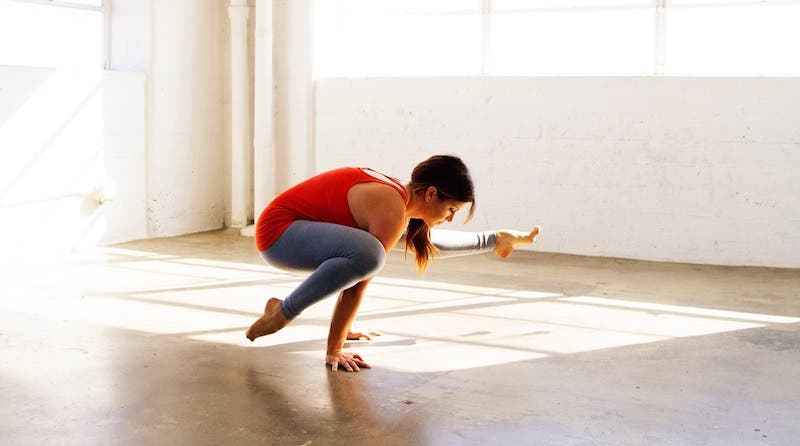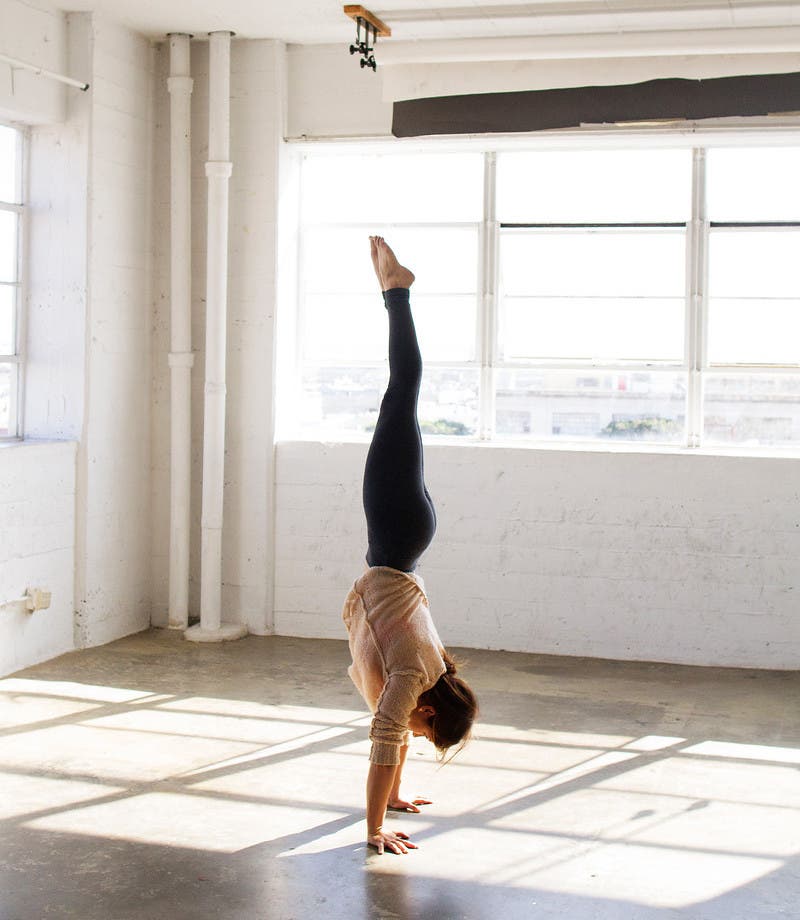Alignment Cues Decoded: “Engage Your Core”


Yoga teacher Alexandria Crow delves into what your teacher really wants you to do when you hear this cue—and it’s not “navel to spine.”
In our culture, a strong core is something mostly associated with a beautiful bikini or swimsuit body, washboard abs, etc. I see the term on the cover of almost every fitness and health/wellness magazine each month when I’m waiting on line at the grocery store, “8 Moves to Strengthen Your Core,” “Tone Your Core” they scream. But the core is actually much more complicated than that.
The Anatomy Behind the Confusing Cue
When I ask students what they would identify as their core, 9 times out of 10 they point to their abdomen. While they’re not wrong (there are key muscles of the core in their abdominal region), there are far more muscles involved than that—depending on the discipline. Some disciplines do only include the abdominal muscles, while others add muscles around the hip area, which support the pelvis and impact the spine’s position. Others still add muscles that wrap around the hip and the midsection, including some leg, hip, and back muscles. I like to think of “core” as global, something wrapping all the way around the body.
See also Alignment Cues Decoded: “Root to Rise”
What Your Teacher Doesn’t Want You to Do
When I press my students further and ask what the instruction “Engage your core” means, they always answer back with, “pull my navel back,” or “draw my navel in,” or “navel to spine,” and that is where the instruction falls very short of what really needs to happen. Let me explain.
In yoga asana, we are trying to do two things with our spines: We are either trying to hold it stable in its well-aligned, neutral position (think Warrior II or Mountain Pose) or we are intentionally trying to manipulate it (think: Wheel Pose, Upward-Facing Dog, or Crow Pose). In those three poses, we are using the core in the same way as in Warrior II or Tadasana but also asking one or more of the core muscles that moves the spine to intentionally manipulate it from its neutral position to another one required for the posture.
If most students think “engage your core” means to pull their belly back, then that cue is really only fully helpful in something like Crow Pose where you are intentionally trying to round your lumbar and thoracic region. That’s because the muscle that pulls the navel back (rectus abdominus) is only responsible for lumbar flexion and helps to further flex the thoracic region and doesn’t provide any stability for the spine. And even then, “engage your core” is too ambiguous to really tell students what must happen. In Crow Pose, the instruction of drawing the belly straight back, or navel to spine will really help a student to position their spine in such a way that Crow becomes more approachable.
See also Patanjali Never Said Anything About Alignment

What Your Teacher Does Want You To Do
In short, engage your core to stabilize and support your spine. The primary target: the highly mobile lumbar region of the spine and the abdominal cavity. It takes tons of effort to do and is much more complex than one cue can convey, but the result is a spine that is well-supported. Using your core-stabilizing muscles to hold your spine and hips in a strong and solid, well-aligned position can make or break your journey to Handstand, for example. Generally speaking, in asana, unless you are intentionally trying to round or arch the entire spine into a backbend or something like Crow Pose, you are trying to hold the integrity and structure of your spine in a solid way like you do when you come into a well-aligned Tadasana, so let’s look at just how you “engage your core” in Mountain Pose.
See also Alignment Cues Decoded: Soften Your Front Ribs
What Your Teacher Could Say Instead
Taking Tadasana, for example, your teacher could say “Engage your core” or:
With your feet hip-width apart, place a block between your legs. Line the center of your heels up behind your second/third toe and balance the weight evenly all the way around each foot. Make sure your kneecaps are facing straight forward. Firm the fronts of your thighs to keep your knees from bending while you contract your hamstrings and glutes to stabilize the knee from behind. Don’t let the fronts of your thighs turn in or out, as you use the muscles between your legs to squeeze the block while you also squeeze the outer edges of your hips into the block. These hip and leg efforts create a lot of stability for your pelvis and thus lumbar region. Now add the muscle that wraps around your waist. If you cough with your hands on your waist you’ll find it. Think of that muscle pulling in toward the midline all the way around your waist as if you were cinching a belt. It won’t move your spine it will simply make it more stable. And lastly you can think of the muscles right above your pubic bone drawing slightly up towards your navel. Tada! A stable core!
As an instructor I believe I must be aware of and understand the muscles that move the body and stabilize it, so that I can teach people where to work, how, and why. The muscles that provide core stability start as low the hips and legs, then the pelvic floor, some deeper abdominal muscles and some back muscles. So if as a teacher we’re looking to get people to hold their spines in good alignment in postures, we need to teach them the efforts of the core stabilizers and become more detailed with our language, so that our students can get the physical benefits of yoga asana and reap the rewards that making progress in poses does for their minds and lives.
See also Alignment Cues Decoded: “Tadasana Is the Blueprint Pose”
About
Alexandria Crow

The practice of yoga has taught Alexandria Crow how to approach life with open eyes and a fearless attitude–a discovery she hopes to pass onto her students. She guides them step by step through creative sequences providing all of the components needed for individual success. By teaching not only alignment but also how to pay attention to what is going on in the body and mind in each moment, Alex teaches her students how to bring greater awareness to everything they do.
Catch up with her on:
http://alexandriacrow.com/
Twitter: @AlexandriaCrow
Instagram: @alexandriacrowyoga
Facebook: @alexandria.crow